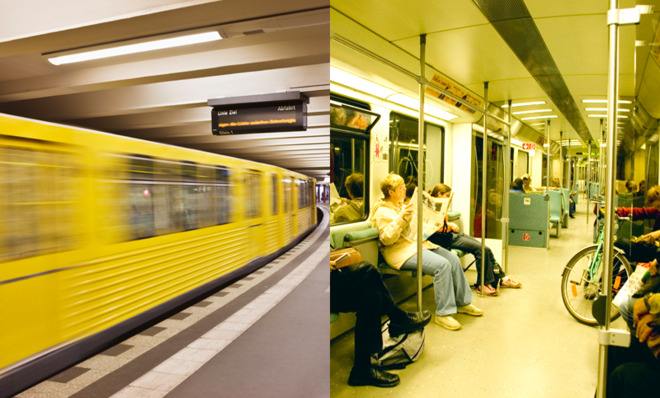New York City's dream of articulated subway cars
The MTA is mulling a 142-page document that includes a proposal for accordion-like cars

How was your commute this morning? Good, I hope? Mine was so-so.
I have to take the C train into Manhattan every morning, you see. For the past four or so years, the C train has earned the dubious distinction of being New York City's worst in class. It's held together by duct tape, comically cramped (the MTA decided to disconnect the front and back cars, meaning C trains are dramatically shorter than many others), and somehow always manages to hit a snag or two before leaving Brooklyn and sputtering along again like a dilapidated pinball.
The New York Times lovingly describes the model R32 cars comprising the C as being "well past their prime," with a "tin-can siding that will continue rolling beneath Eighth Avenue for at least a few more years."
The Week
Escape your echo chamber. Get the facts behind the news, plus analysis from multiple perspectives.

Sign up for The Week's Free Newsletters
From our morning news briefing to a weekly Good News Newsletter, get the best of The Week delivered directly to your inbox.
From our morning news briefing to a weekly Good News Newsletter, get the best of The Week delivered directly to your inbox.
A few more years. Not exactly music to C train commuters' ears, but not entirely unexpected. New York City's boisterous transit system, in addition to being the most extensive in the world (roughly 656 miles of usable track), is also one of the world's oldest. The trains themselves are intended to last multiple decades, each a rapidly rusting relic of a not-so-distant past. (Unless you live off the Q, which is as inversely good as the C is bad.)
This presents a unique challenge, since New York City's already crowded population is only growing. While the populations of other major metropolitan cities like Los Angeles and Chicago have leveled off in the past decade, New York shows no signs of tapering off anytime soon.
So the big logistical question for the next decade becomes: How do you transport millions of commuters every morning with a finite number of subway cars on tracks that the city government can't seem to build fast enough? One potential remedy: Perhaps we should make more efficient trains.
The New York Times reports the MTA began flirting this month with the idea of rolling out articulated subways, which connect cars with accordion-like bellows. That means there are no doors in between individual cars, allowing for "unrestricted flow throughout the length of the subway." It's just one long stretchy tube.
A free daily email with the biggest news stories of the day – and the best features from TheWeek.com
Passengers could theoretically board at the back of the subway and make their way to the front by the time they get off. This also means more space for passengers to stand, more room for seats, and less overcrowding on sardine-packed cars. Articulated train models have already been adopted in cities like Berlin, Paris, and Toronto, so yes, the concept is wholly feasible.
"We're one of the largest systems in the world that doesn't do it," said Richard Barone, the director of transportation programs at the Regional Plan Association. "Our trains don't function right now to allow people to circulate."
Which isn't to say a rollout would be easy for a subway system approaching its 110th birthday; there are pratfalls. You can't close an individual car down to clean it as the train rolls on, for example, meaning there's no escaping all those overindulgent weekend drinkers inclined to vomit. Oddball smells would waft through the air indiscriminately. And if air conditioning happens to shut off in the dead of summer? Hoo boy.
And it should be noted that the city does have a history with articulated trains.
In 1924, the Brooklyn-Manhattan Transit Corporation introduced plans for the "Triplex," with a hinged, multisectioned body. It operated on the B, D, N, Q and R lines over a period of 40 years, representing "the height of transit modernity" at a moment when elevated lines often still featured wooden cars, according to the New York Transit Museum. [New York Times]
Still, even if they seem less novel, articulated trains sound eminently more promising than what daily commuters are currently working with. Perhaps if the idea gains momentum, the MTA will roll out the space-efficient, easier-to-board trains in, oh, I don't know, the next 20 years or so.

